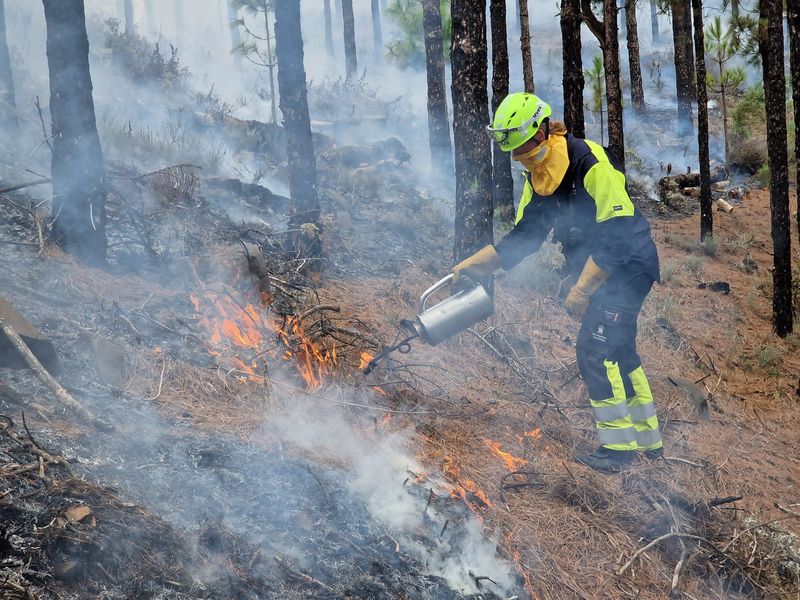Today, the kick-off meeting of the ‘Foc i Biodiversitat‘ project took place in Beget (Camprodon), attended by the Director General of Environmental Policies and Natural Environment, Marc Vilahur; the Director of the Alta Garrotxa Consortium, Sara Sánchez; the Director of the Pau Costa Foundation, Jordi Vendrell, as well as the technicians who will monitor the project and members of the Pau Costa Foundation involved
In this meeting, the lines of action were analyzed, and the Governance Table was established as a tool to facilitate decisions and the implementation of the project. The goal is to create an inclusive space where local stakeholders involved in the project’s activities can participate and engage, ensuring more effective and responsible management of the available resources
The Alta Garrotxa Protected Natural Area is in a vulnerable situation regarding forest fires due to the effects of climate change, abundant vegetation, and complex topography. To address this issue, the ‘Foc i Biodiversitat’ project, led by the Pau Costa Foundation and supported by key entities and stakeholders in the intervention areas, will focus on the restoration of open spaces for biodiversity conservation and the management of forest fire risk.
Specifically, “Foc i Biodiversitat” foresees six different lines of action: 1.) the development of a Prescribed Burning Program for the use of fire with the aim of enhancing the conservation of pastures and open spaces through a multidisciplinary working team that includes the managing body, livestock farmers, landowners, and emergency managers. 2.) The implementation of actions identified in the existing Extensive Livestock Promotion Plan (PIRE) as a conservation tool to restore pastures, which will help maintain open spaces, thereby reducing the risk of fires and promoting biodiversity, favoring species of interest such as the European turtle dove (with declining populations globally), the butterfly Euplagia quadripunctaria, and many other wildlife species such as raptors and birds typical of open spaces (e.g., the Woodlark, the red-backed shrike, etc.).

3.) Promote the Renaturalization of the area to restore ecological processes and encourage the harmonious coexistence between human activities and ecosystems, such as the coexistence between wolves and livestock; 4.) Open a Research Line to analyze the impact of fire on biodiversity and the recovery of habitats for many species; 5.) Promote the Management of public use of natural areas to prevent negative impacts resulting from intensive recreational activities; and 6.) Promote Outreach and awareness actions on the ecological role of fire, prescribed silvopasture, and the benefits of prescribed burning.
The Pau Costa Foundation will carry out this four-year project (2024-2027), in collaboration with key entities and stakeholders from the intervention areas and in partnership with the Departament de Territori; Habitatge i Transició Ecològica.







